
Whitney Warren (American, 1864–1943). Tile Floor, Diane de Poitiers Bedroom, Château de Chaumont, June 12, 1888. Brush and watercolor, graphite on off-white wove paper tipped into binding with fabric, 12 5/8 × 9 3/4 in. (320 × 248 mm), irregular. Cooper-Hewitt, National Design Museum, Smithsonian Institution, Gift of Mrs. William Greenough, 1943-51-216
Cooper-Hewitt’s Drawings, Prints, and Graphic Design department collection holds a large group of drawings by Whitney Warren, including two albums of over 230 sketches made while he was living in France in the last decades of the nineteenth century. With a generous grant from the Henry Luce Foundation, these sketches were recently conserved and digitized, and will be added to the Museum’s Web site in the coming months. 
Water Tower, Hoorn, August 23, 1887. Graphite on cream paperboard tipped into binding with fabric, 12 5/8 × 9 5/16 in. (320 × 237 mm), irregular. Cooper-Hewitt, National Design Museum, Smithsonian Institution, Gift of Mrs. William Greenough, 1943-51-105
When he arrived in Paris in 1884, Warren was about twenty years old and newly married, an aspiring architect focused on building his portfolio as part of his application to the prestigious Ecole des Beaux-Arts. Like many talented American artists and architects at that time, Warren spent his formative young adulthood traveling through present-day Belgium, Germany, Italy, France, and the Netherlands, venturing as far as the Portugese Azores at the end of his European sojourn in 1895. All the sketches depicted here were executed by Warren in the summer months between 1887 to 1895. 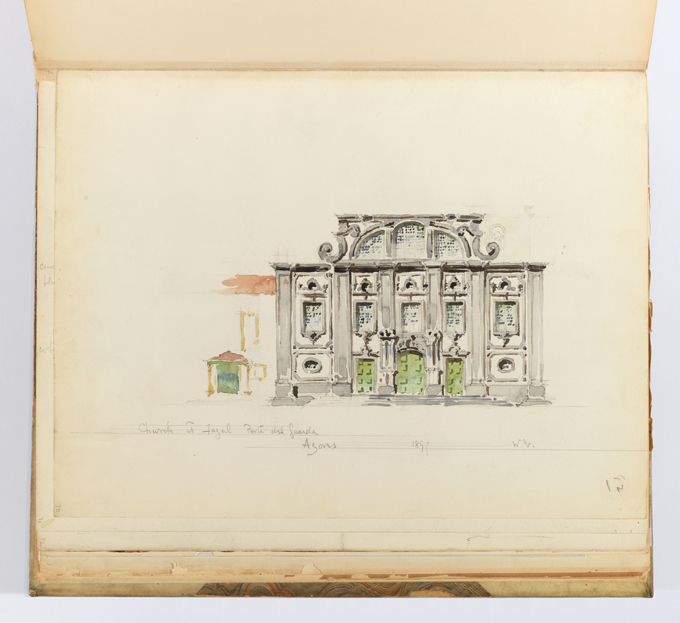
Elevation of Church of the Colégio, Ponta Delgada, Azores, 1895. Brush and watercolor, graphite on off-white wove paper tipped into binding with fabric, 9 3/16 × 12 1/4 in. (234 × 311 mm), irregular. Cooper-Hewitt, National Design Museum, Smithsonian Institution, Gift of Mrs. William Greenough, 1943-51-243
Warren’s sketches uniquely documented very specific elements of buildings as well as rendered them in full elevation. These engaging and often beautiful drawing exercises completed during his student years trained his eye for detail and reinforced practical elements of building construction. While these albums survive in Cooper-Hewitt’s collections as documents of Warren’s travels, during his life they were invaluable sourcebooks which he mined throughout his career. In fact, many of the details and ornament were replicated in projects built by his architectural firm, Warren & Wetmore, well into the 1940s. 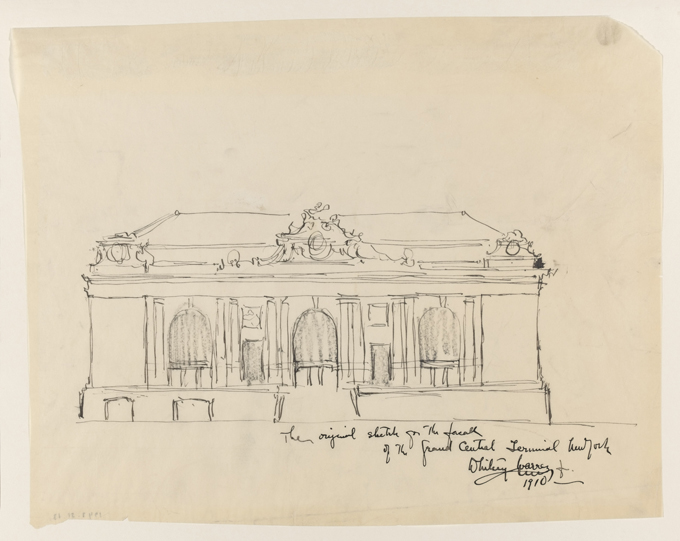
Design for Façade of Grand Central Terminal, New York City, 1910. Pen and black ink, graphite on cream tracing paper, 10 × 12 15/16 in. (254 × 328 mm), irregular. Cooper-Hewitt, National Design Museum, Smithsonian Institution, Gift of Mrs. William Greenough, 1943-51-13
The intricate, picturesque rooflines of masonry and timber-frame buildings in the Northern Renaissance style were favored by Warren, as their uneven dormers and gables made for challenging subjects. 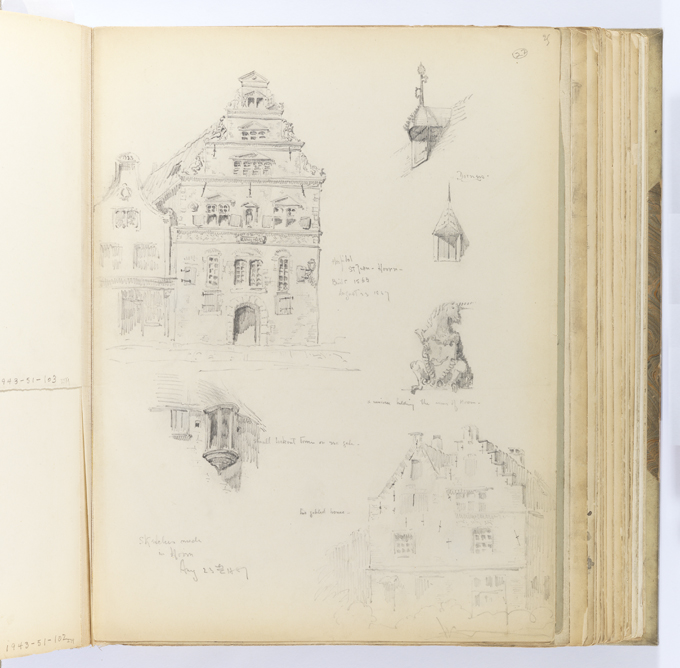
Sketches from Hoorn, August 23, 1887. Graphite on cream paperboard tipped into binding with fabric, 12 1/2 × 9 7/16 in. (317 × 240 mm), irregular. Cooper-Hewitt, National Design Museum, Smithsonian Institution, Gift of Mrs. William Greenough, 1943-51-104 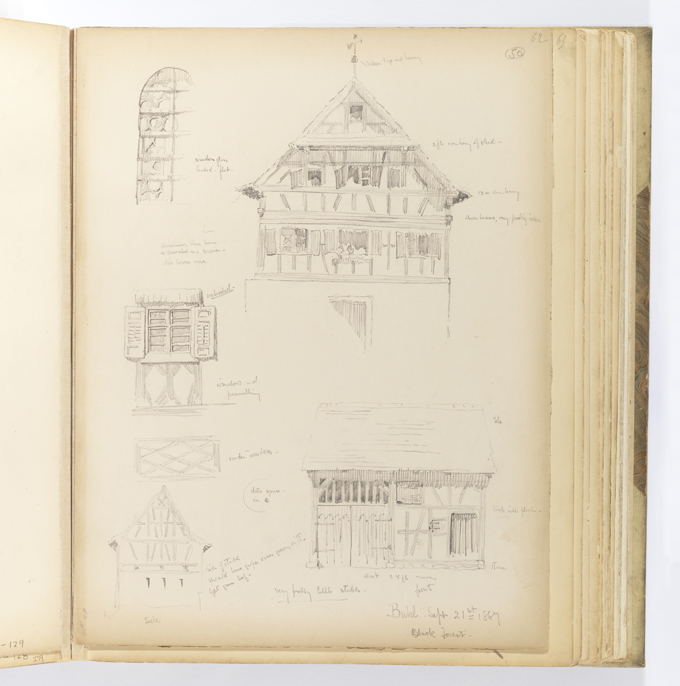
Sketches of Architectural Elements, Buhl, September 21, 1887. Graphite on cream paperboard tipped into binding with fabric, 12 5/16 × 9 7/16 in. (312 × 240 mm), irregular. Cooper-Hewitt, National Design Museum, Smithsonian Institution, Gift of Mrs. William Greenough, 1943-51-130
Not only did Warren include the details of buildings, he frequently specified their dimensions or materials. Examples include these two sketches below of a building in Lisieux and a window with a central medallion of a porcupine, the emblem of Louis XII, in the Grande Salle at the Château de Blois.
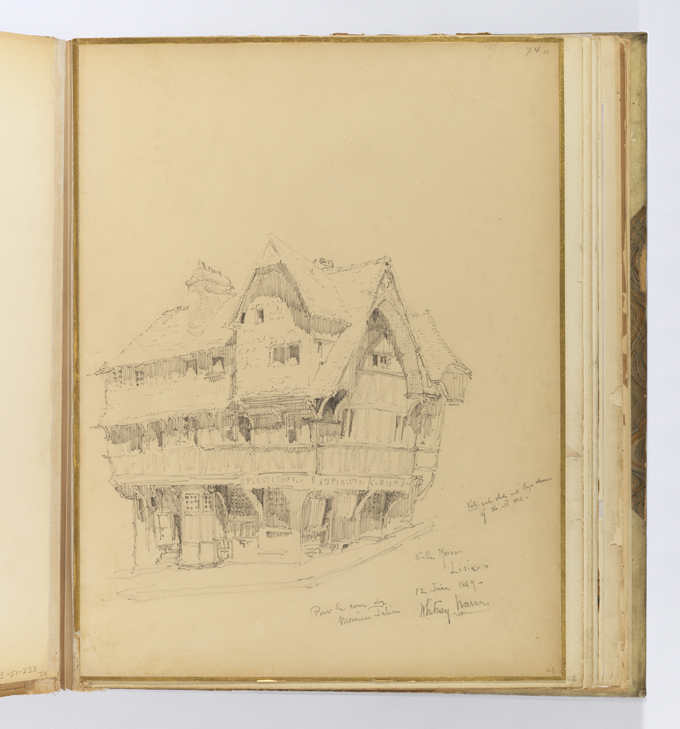
Vieille Maison, Lisieux, June 12, 1889. Graphite on cream wove paper on secondary paperboard support with painted gold edge tipped into binding with fabric, 12 3/16 × 9 5/16 in. (309 × 236 mm), irregular; mount: 12 3/8 × 9 1/2 in. (315 × 241 mm). Cooper-Hewitt, National Design Museum, Smithsonian Institution, Gift of Mrs. William Greenough, 1943-51-234 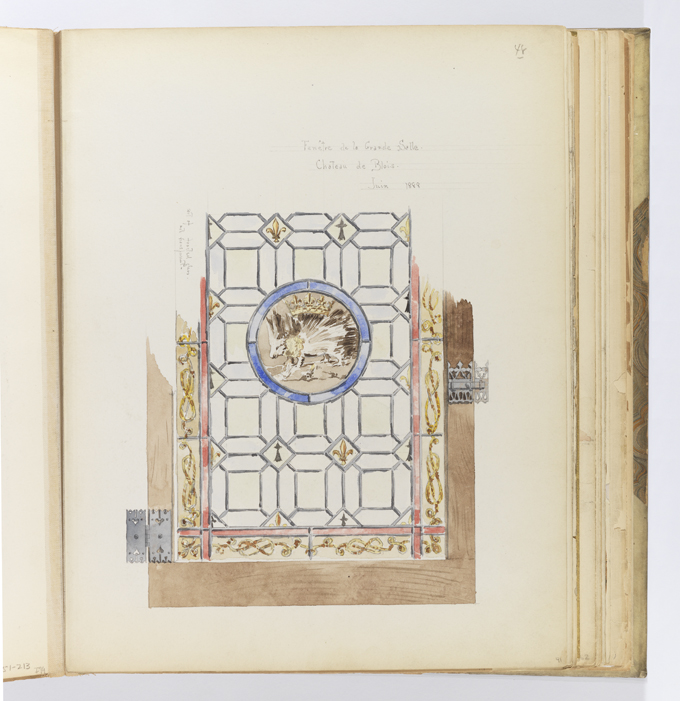
Window of the Grand Salle, Château de Blois (Fenêtre de la Grande Salle, Château de Blois), June 1888. Brush and watercolor, graphite on off-white wove paper tipped into binding with fabric, 12 1/2 × 9 3/4 in. (317 × 247 mm), irregular. Cooper-Hewitt, National Design Museum, Smithsonian Institution, Gift of Mrs. William Greenough, 1943-51-214
Inscriptions on the drawings provide a window into Warren’s resolute personality, already established at a young age. A drawing dated June 17, 1888, illustrates a balcony railing from a chapel at Chenonceau. In the upper right corner, Warren tried in vain to capture the details of one of the balusters, but criticized his attempt as “not delicate enough,” noting it was “impossible / to get near it.” An element of this balcony was significant enough for him to return to sketch it again the next day. The June 18 drawing depicts the elusive baluster, and one can sense Warren’s triumph in his note that the rendering was “full size.” 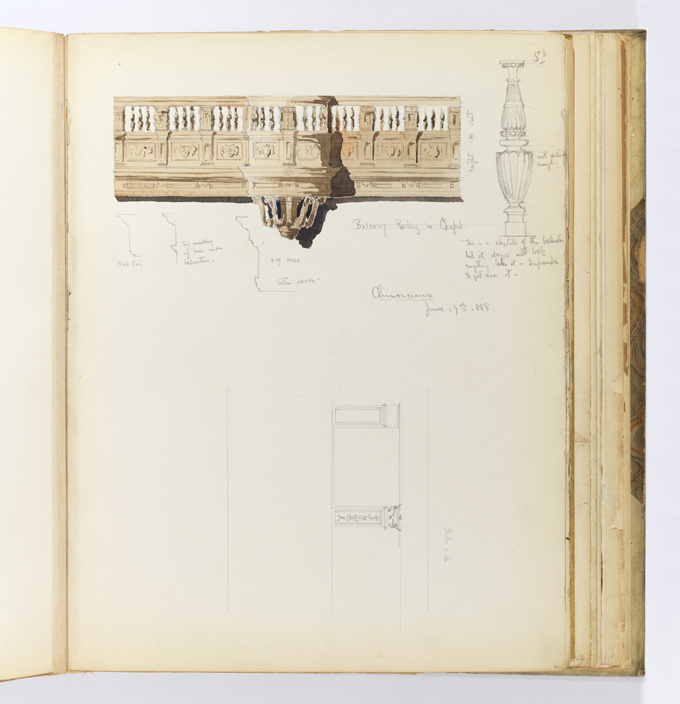
Balcony Railing in Chapel, Château de Chenonceau, Chenonceaux, June 17, 1888. Brush and watercolor, graphite on off-white wove paper tipped into binding with fabric, 12 9/16 × 9 3/4 in. (319 × 248 mm), irregular. Cooper-Hewitt, National Design Museum, Smithsonian Institution, Gift of Mrs. William Greenough, 1943-51-219 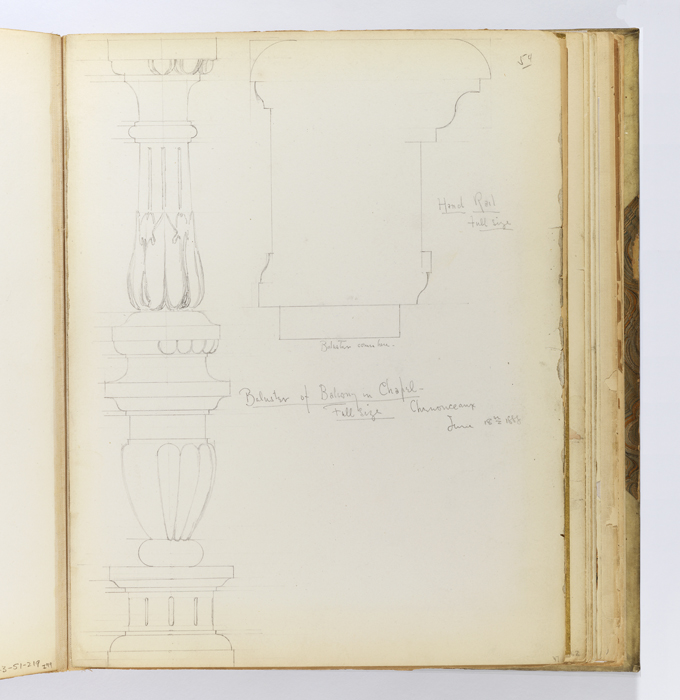
Balcony Elements in Chapel, Château de Chenonceau, Chenonceaux, June 18, 1888. Graphite on off-white wove paper tipped into binding with fabric, 12 9/16 × 9 3/4 in. (319 × 248 mm), irregular. Cooper-Hewitt, National Design Museum, Smithsonian Institution, Gift of Mrs. William Greenough, 1943-51-220
Photos: Matt Flynn, © Smithsonian Institution